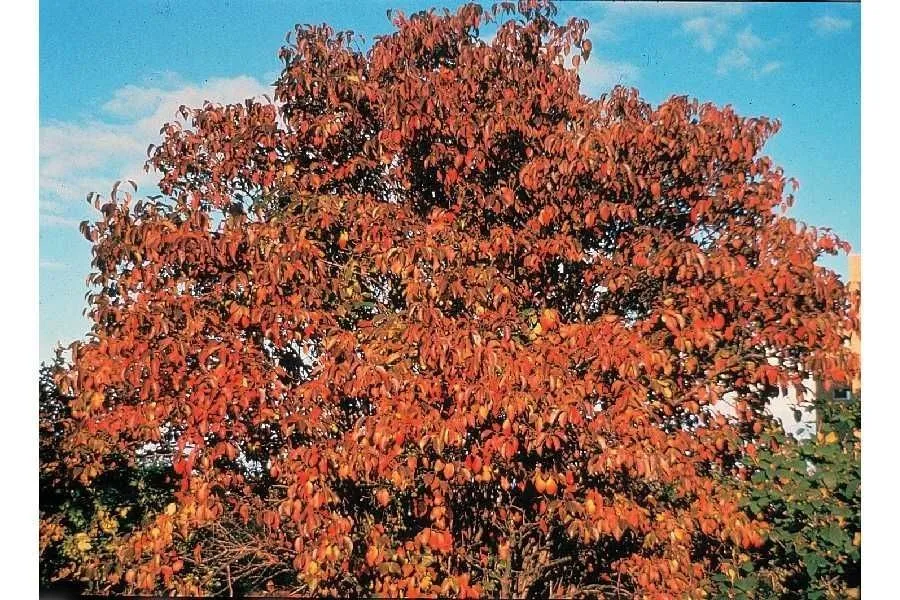
Author: L.
Bibliography: Sp. Pl.: 268 (1753)
Year: 1753
Status: accepted
Rank: species
Genus: Viburnum
Vegetable: False
Observations: C. & E. Canada to N. & E. U.S.A.
Sheepberry, scientifically known as Viburnum lentago, is a perennial plant that has garnered appreciation for its ornamental beauty and ecological importance. Originally classified in 1753 by the renowned botanist Carl Linnaeus, this versatile plant finds home across diverse landscapes from Central and Eastern Canada to Northern and Eastern regions of the United States.
Belonging to the family Viburnaceae, Sheepberry is often admired for its distinctive features, which add unique aesthetic and functional value to gardens and natural habitats alike. The shrub or small tree typically grows in moist soils, often thriving along stream banks, in thickets, and forests. It can reach a height of up to 20 feet, forming a rounded crown adorned with lush green leaves that turn into a magnificent reddish-purple hue in the fall, thereby enhancing seasonal visual interest.
Spring heralds the blooming period for Viburnum lentago, where it showcases clusters of creamy white flowers. These blooms are not just attractive to the human eye but also serve an important ecological role, attracting a myriad of pollinators including bees and butterflies. Following the flowering stage, Sheepberry produces berries that transition in color from green to yellow, red, and eventually black as they ripen. These berries are a vital food source for birds and small mammals, playing a crucial part in local ecosystems.
The plant’s hardy nature and adaptability make it a popular choice for natural hedges, wildlife gardens, and as a standalone ornamental specimen. Furthermore, Sheepberry has historically been appreciated not only for its ornamental value but also for its edible properties. Once fully ripe, the berries are known for their sweet flavor and can be consumed fresh or used in making jams and jellies.
In cultivation, Sheepberry is relatively low-maintenance. It prefers full sun to partial shade and well-drained soils, though it can tolerate a variety of soil types. Regular watering supports its growth, especially during dry spells, but established plants show considerable drought resistance.
In summary, Viburnum lentago, or Sheepberry, is a notable plant for its visual appeal, adaptability, and ecological benefits. Its presence from Canada to the United States enhances biodiversity and provides both aesthetic pleasure and practical value to environments and gardeners who choose to integrate this vibrant species into their landscapes.
Eng: black haw, nanny-berry, nannyberry, sheepberry, sweet viburnum
Swe: glansolvon
Fra: viorne flexible, alises, alisier, bourdaine, viorne lentago
En: Sheepberry, Black haw, Sweet viburnum, Nannyberry, Birnenblttriger Schneeball, Schneeball, Nanny-Berry
Be: Каліна канадская
Zh: 保姆莓
Hr: Kanadska hudika
Cs: Kalina severoamerická
Fi: Kiiltoheisi
Fr: Bourdaine, Viorne a manchettes, Viorne lentago, Viorne flexible, Alises, Alisier
Lt: Kanadinis putinas
Fa: بداغ
Sv: Glansolvon
Taken Jul 16, 2019 by Starr (cc-by-sa)
Taken May 29, 2020 by J D (cc-by-sa)
Taken Jun 15, 2020 by marsy Debis (cc-by-sa)
Taken Jun 8, 2021 by François Bernard-Sévigny (cc-by-sa)
Taken May 22, 2021 by Sarah (cc-by-sa)
Taken Aug 6, 2021 by Andrii Zvorygin (cc-by-sa)
Taken Aug 1, 2020 by philip beef (cc-by-sa)
Taken Aug 2, 2022 by Renée-Louise Lamontagne (cc-by-sa)
Taken Jul 8, 2021 by Aline Baron (cc-by-sa)
Taken Jun 20, 2022 by Linda Johnson (cc-by-sa)
Taken May 29, 2020 by J D (cc-by-sa)
Taken Jul 16, 2019 by Starr (cc-by-sa)
Taken May 21, 2021 by Emily Huebener (cc-by-sa)
Taken May 31, 2022 by Myrith (cc-by-sa)
Taken May 22, 2021 by xu lu (cc-by-sa)
Taken Jan 16, 2021 by Diego Alex (cc-by-sa)
Taken Jun 24, 2022 by Amy (cc-by-sa)
Taken Oct 24, 2022 by Erin Isaac (cc-by-sa)
Taken Jul 29, 2019 by Emmerich El (cc-by-sa)
Taken Jun 15, 2020 by marsy Debis (cc-by-sa)
Taken Sep 22, 2021 by jackson wojnowski (cc-by-sa)
Taken Jan 1, 1900 by EOL − ND State Soil Conservation Committee. USDA NRCS ND State Office. United States, ND. (public)
Taken Jan 1, 1900 by EOL − Howard, R.A. (cc-by-nc-sa)
Taken Jan 1, 1900 by EOL − Howard, R.A. (cc-by-nc-sa)
Taken Jan 1, 1900 by EOL − Carol Kelloff (cc-by-nc-sa)
Taken Jan 2, 2016 by EOL − owenclarkin (cc-by-nc)
Growth form>: Multiple Stem
Growth habit>: Tree, Shrub
Growth rate>: Slow
Ph maximum: 7.0
Ph minimum: 5.0
Family: Myrtaceae Author: (F.Muell.) K.D.Hill & L.A.S.Johnson Bibliography: Telopea 6: 402 (1995) Year: 1995 Status:…
Family: Rubiaceae Author: Pierre ex A.Froehner Bibliography: Notizbl. Bot. Gart. Berlin-Dahlem 1: 237 (1897) Year:…
Family: Sapindaceae Author: Koidz. Bibliography: J. Coll. Sci. Imp. Univ. Tokyo 32(1): 38 (1911) Year:…
Family: Asteraceae Author: A.Gray Bibliography: Pacif. Railr. Rep.: 107 (1857) Year: 1857 Status: accepted Rank:…
Family: Fabaceae Author: Medik. Bibliography: Vorles. Churpfälz. Phys.-Ökon. Ges. 2: 398 (1787) Year: 1787 Status:…
Family: Aspleniaceae Author: (Cav.) Alston Bibliography: Bull. Misc. Inform. Kew 1932: 309 (1932) Year: 1932…